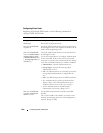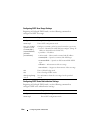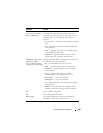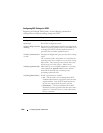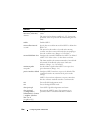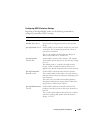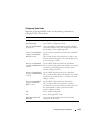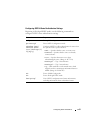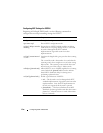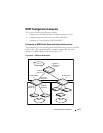
1170 Configuring OSPF and OSPFv3
ipv6 ospf dead-interval
seconds
Set the OSPFv3 dead interval for the interface.
The
seconds
variable indicates the number of seconds a
router waits to see a neighbor router's Hello packets before
declaring that the router is down (Range: 1–65535).
This parameter must be the same for all routers attached
to a network. This value should be some multiple of the
Hello Interval.
ipv6 ospf transmit-delay
seconds
Set the OSPFv3 Transit Delay for the interface.
The
seconds
variable sets the estimated number of
seconds it takes to transmit a link state update packet over
this interface. (Range: 1–3600 seconds)
ip ospf mtu-ignore Disable OSPFv3 MTU mismatch detection on received
database description packets.
ipv6 ospf network
{broadcast | point-to-
point }
Set the OSPFv3 network type on the interface to
broadcast or point-to-point. OSPFv3 selects a designated
router and originates network LSAs only for broadcast
networks. No more than two OSPFv3 routers may be
present on a point-to-point link.
ipv6 ospf cost
interface-
cost
Set the metric cost of the interface.
The
interface-cost
variable specifies the cost (link-state
metric) of the OSPFv3 interface. (Range: 1–65535)
bandwidth
bw
Set the interface bandwidth used in the formula to
compute link cost for an interface:
link cost = ref_bw÷interface bandwidth
The
bw
variable is the interface bandwidth (Range:
1–10000000 Kbps).
exit Exit to Global Configuration Mode
ipv6 router ospf Enter OSPFv3 configuration mode.
passive-interface {vlan
vlan-id
| tunnel
tunnel-
id
}
Make an interface passive to prevent OSPFv3 from
forming an adjacency on an interface. OSPFv3 advertises
networks attached to passive interfaces as stub networks.
exit Exit to Global Config mode.
exit Exit to Privileged EXEC mode.
Command Purpose



